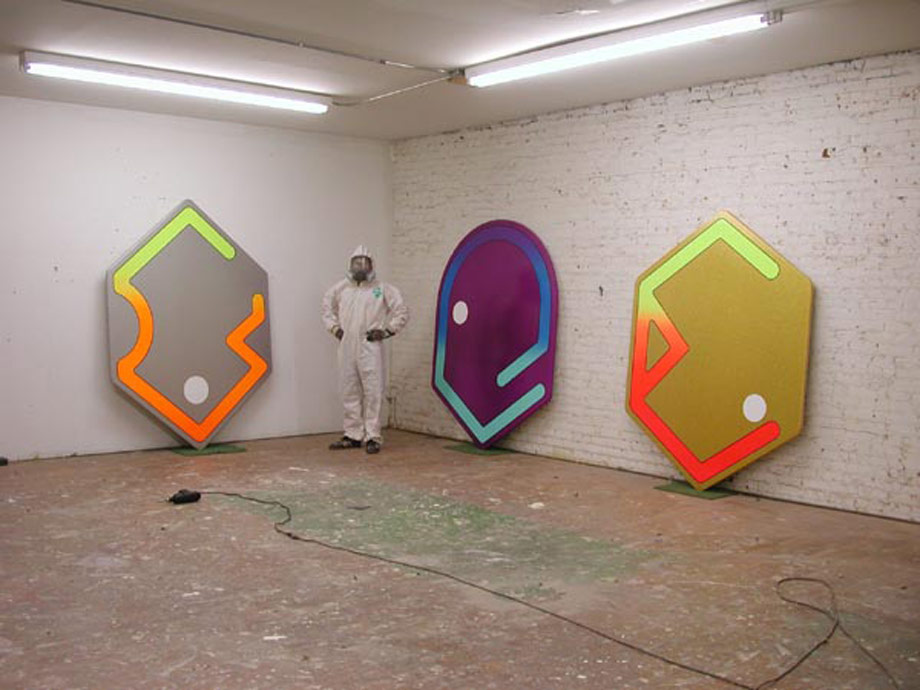


Greg Bogin’s work is committed to American art history and its pictorial world in the 60s in a form that is particularly typical of his generation. Artistically, he is oriented towards Minimal and Pop Art. In terms of form and colour his works are stimulated by the logos and trade marks of this period. Environmental enhancement panel #1 is a synthesis of these influences.
Bogin’s pictures, pleasing in an intelligent way, do not accept the Minimalists’ canon of parameters and operate on another plane in terms of content: superficially, they confirm Minimal Art’s demand for self-reference. As well as this, Bogin’s pictures combine artistic positions that had hitherto not been brought together like those of Donald Judd and Andy Warhol, thus creating a kind of painting that could be called ‘Minimal Pop’.
Greg Bogin’s analysis of 60s art and design is shaped by a contemporary view of the ‘Minimal’ phenomenon. His transfer to the present means that Minimal Art loses its programmatic rigour, which makes it more accessible. He is also following a necessity with his approach to American ‘popular’ culture. In a mediatized world, in which every sign is charged with meaning, it becomes ever more problematical to create the ‘meaning-free’ images that Minimal Art demands.
Lives in New York, works in Brooklyn.
1987 – BFA The Cooper Union, New York City 1983-87
Galerie Frank Elbaz, Heart-Shaped Box Paris, Jun 6 – Jul 25, 2014
“My Fellow Primates”, Paulo Curti/Annamaria Gambuzzi & Co., Milano
Leo Koenig, New York City
“I like you two”, Jablonka Galerie, Koln, Germany
“Che Vediamo”, Mario Diacono Boston, Massachusetts
“And So On?”, Galleria Cardi & Co, Milan Italy (catalogue produced)
“Greg Bogin, New Paintings”, Mary Boone Gallery, New York City
“Getting To Know You”, Ishizaka Art, Tokyo, Japan
“Signature Series”, Mary Boone Gallery, New York City
“Whatever you like? Galerie Bruno Bischofberger, Zurich, Switzerland
“Greg Bogin”, Mary Boone Gallery, New York City
“I Like You”, Jablonka Galerie, Koln, Germany
Please select page(s) to create PDF and arrange it by dragging up/down accordingly.